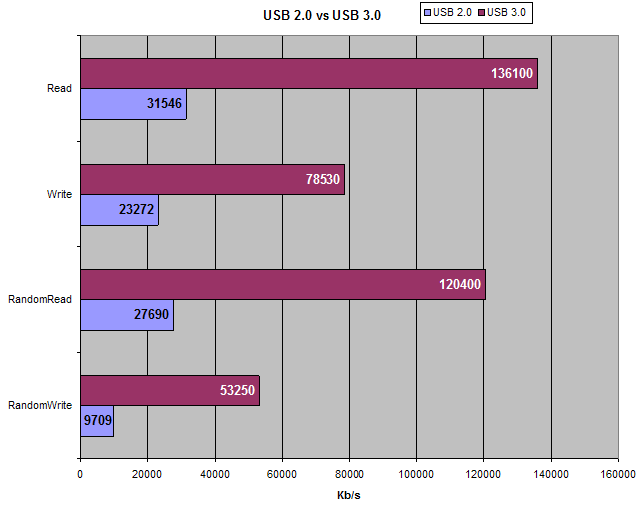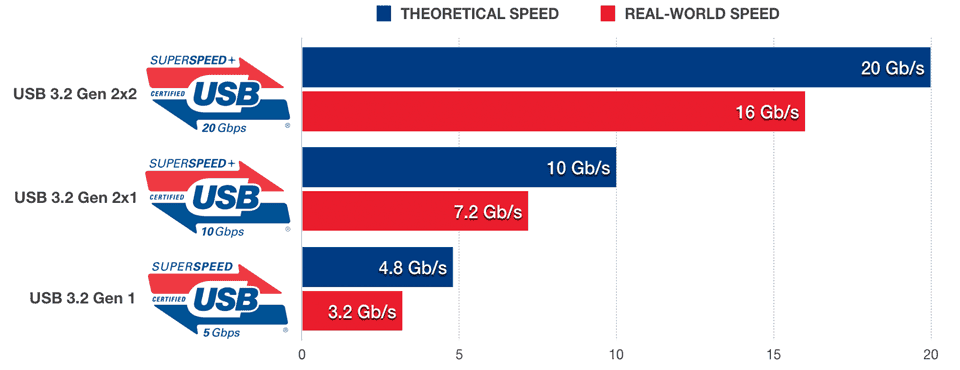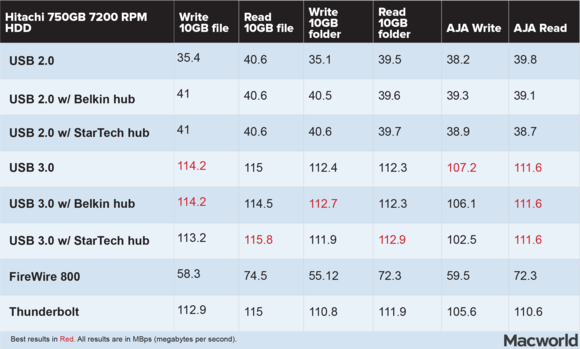

PC CPU GPU SSD RAM HDD USB 53,477,767 PCs tested. Copying a 25 GB blue-ray would have taken approx 15 minutes using USB 2.0, with USB 3.0 it would take just over a minute, with 10 Gbps USB 3.0 it will take less than 30 seconds and with USB 4.0, when its invented, it will no doubt take less than 15 seconds!Īre there any non speed related improvements? Finally video file sizes have also grown enormously e.g. The same is true for audio, originally the bitrate for an mp3 music track was typically around 128 KB/s, nowadays lossless formats are increasingly popular and they run at bitrates ranging from 400 KB/s upwards. Regarding speed, this drive doesnt hold a candle to the top. As Apple continues to push the envelope with its retina display, devices are able to display more pixel depth and correspondingly those old jpg's that used to look just fine start to look poor in comparison to higher definition images. For Windows, the fastest time recorded was 135 MB/S (read) & 127 MB/S (write) using the USB-A port.

High definition audio, video and photo files are primarily responsible for these increased capacity requirements. How fast are the competing external interfaces?Ī few years ago 250 GB was considered enormously large for a hard drive, nowadays 2000-4000 GB is quickly becoming the norm. The latest record-breaking SSD from Samsung, the 840 Pro, has a sequential read speed of 511.17 MBps and would likely be hindered by a USB 3.0 connection because real-world USB 3.0 speeds (400 MBps) are significantly lower than the theoretical 625 MBps limit set by the spec. Bleeding edge Solid State Drives on the other hand are a different story. Furthermore, in terms of the generally more important random 4K speeds, Flash Drives are still struggling to break 10 MBps. That is because USB 3.0 devices that are attached to a USB 2.0 hub can only operate at high speed. We lab tested 30 of the fastest USB 3.0 flash drives and found that in terms of sequential speeds they operate far below the USB 3.0 limit of 625 MBps. Here are a few things to try if you find that your USB 3.0 device is capable of operating at SuperSpeed but is operating a lower bus speed: Make sure that you do not have a USB 2.0 hub between the device and the PC. USB 3.0 is still a reasonably safe bet in today's market because there are still very few devices capable of saturating a USB 3.0 connection. USB 3.0 All : All Test (Seq Q32T1, 4K Q32T1, Seq, 4K ) Seq Q32T1: Sequential (Block Size128KiB) Read/Write with multi Queues & Threads 4K Q32T1. In terms of release date, the previous major USB releases are spaced out by approximately six years so we estimate around the 2020 mark for USB 4.0.

There are currently no official proposals for the USB 4.0 specification however if its speed increase is in line with previous spec revisions, it should offer transfer rates of approximately 10,000 MBps, ten times faster than both its predecessor and Thunderbolt.


 0 kommentar(er)
0 kommentar(er)
